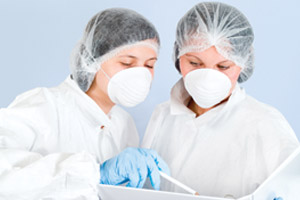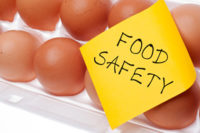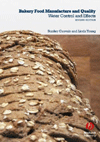 The number of food recalls and food safety failures due to mislabeling, allergen concerns and failing process conditions has steadily increased over the last few years. The U.S. food industry has recently been under public scrutiny after experiencing several large, multi-state food contamination outbreaks that affected many people. In almost all cases, the facility under investigation had been visited by a second- or third-party auditor—often multiple auditors per year—for several days. So how can a facility have a passing audit and still have a food safety failure?
The number of food recalls and food safety failures due to mislabeling, allergen concerns and failing process conditions has steadily increased over the last few years. The U.S. food industry has recently been under public scrutiny after experiencing several large, multi-state food contamination outbreaks that affected many people. In almost all cases, the facility under investigation had been visited by a second- or third-party auditor—often multiple auditors per year—for several days. So how can a facility have a passing audit and still have a food safety failure?Food safety is hard work. It takes ongoing, diligent work to ensure that food safety levels are top notch. Many of our food-safety challenges are issues inherent in the raw materials. This is especially the case when looking at pathogens, which occur naturally in the environments from which food ingredients come.
Even when processors have effective controls to eliminate these hazards, the risk still exists that the control measure will fail or that the hazard will be reintroduced after being eliminated. It takes multiple programs working together to produce safe food.
Over many years, food producers learned how to develop procedures and practices to make safer food. But the inherent risk is there every day, and procedures and practices require constant human intervention and oversight.
Although food producers are ultimately responsible for bringing safe food to market, food safety is a shared responsibility of the industry, regulators and audit firms. The goal is to create a culture of food safety embedded within corporate social responsibility and reflected on the plant floor.
The regulatory role of the U.S. Food and Drug Administration (FDA) is to enforce the framework of food-safety regulations in which companies operate. Auditors are support elements to partner with food companies and provide guidance against best practices. Auditors are not responsible for the mismanagement or lack of execution of programs.
So what is the role of third-party auditors? They are independent reviewers. They look at standard programs for the food being processed and/or packaged and then spot-check to verify that the programs are being carried out on the processing floor, as written in the procedures and as required by regulation and industry standards. Reports and observations based on these reviews are given to operators to use to improve their food-safety programs and/or to potential or actual buyers of the products coming from the facilities.
No matter how reputable or experienced a third-party provider or how detailed the report, audit reports cannot reflect the conditions or events that may exist during manufacturing and may lead to a food-safety failure. Third-party providers cannot guarantee food safety. They can identify weaknesses and trends within a plant that the facility’s management team can use to improve its systems and training. Their reports can be used by potential buyers to assess potential risks posed by a given supplier.
Consultative audits and inspections are voluntary tools. They are not regulatory or meant to replace regulatory inspections or certification audits. Depending upon their standards and protocols, some audits and inspections, such as the AIB good manufacturing practice (GMP) inspection, can provide a valuable educational experience for facility operators.
All of us involved in providing safe food know our work continues and is never done. We don’t work toward food safety because of any external incentive; we do it because it’s the right thing to do to protect all consumers from any potential risk of injury or illness. We diligently strive to prevent loss of life or injury due to food-safety issues. New research and data, updated standards and improved training are a continuum that we must travel determinedly and continually to reduce the risk of failure to its lowest level. SF&WB





